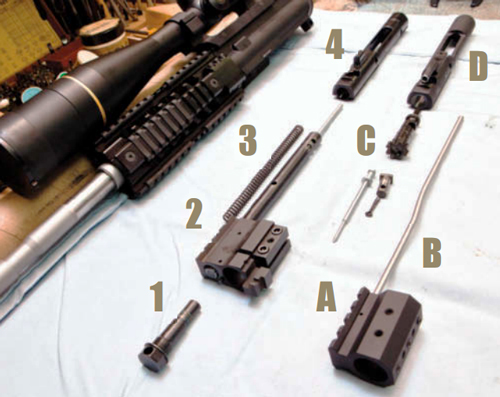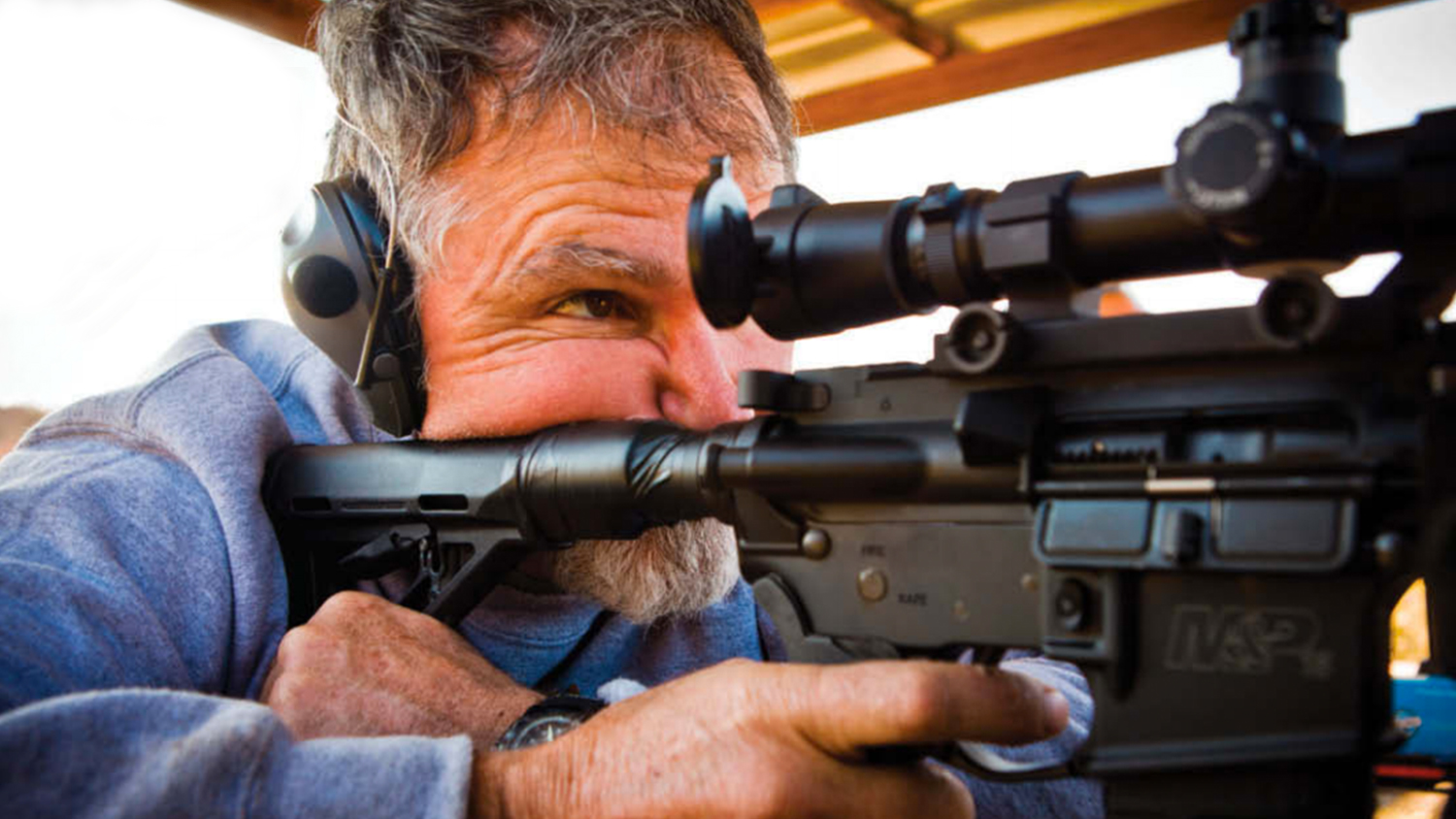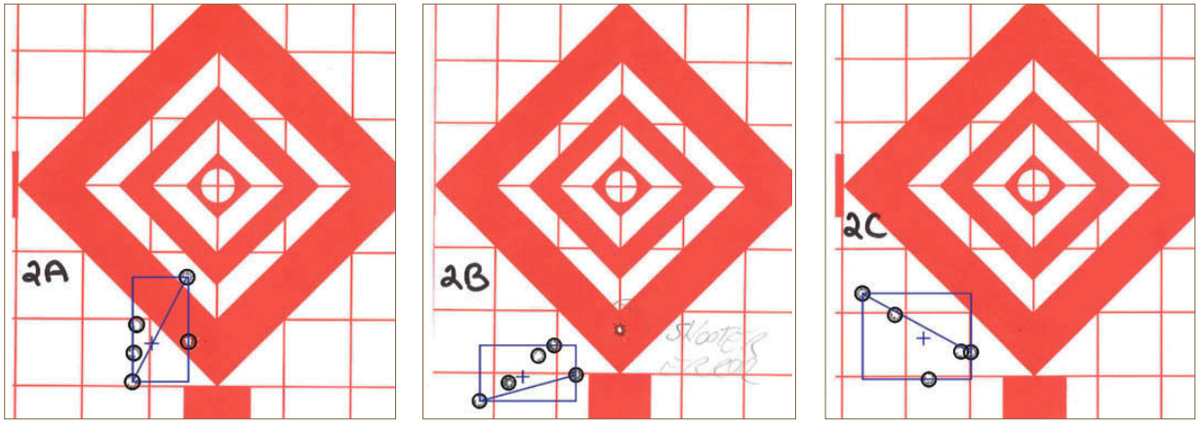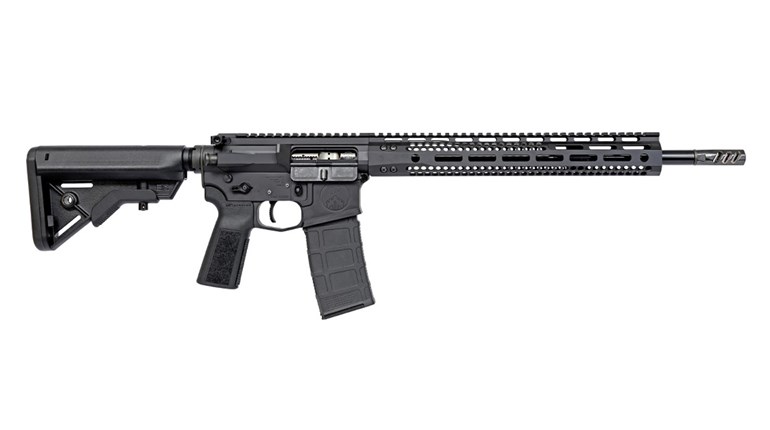Master gunsmith and builder David Sams approached us with the idea of settling a nagging question about the effect that a gas piston modification might have on an AR-15’s accuracy. Keep in mind that when Sams says “accuracy,” he’s talking about sub minute-of-angle (MOA) design methods learned while at the U.S. Army Marksmanship Unit. Sams’ experience making world-class match guns and frequent discussions with industry experts led him to question the wisdom of re-designing the AR-15 match grade rifle to accommodate a gas piston design. “Why fix what isn’t broken?” For an objective review, Sams invited us to participate in head-to-head tests. Sams would build the common platform to be used for both tests and we would serve as spotter, videographer and scorer.
The Technology
Early experiments with automatic firearms tried harnessing the power of recoil to keep things running. In modifications that followed, direct gas impingement (just the gas) and gas piston (gas plus a metal operating rod) designs were used to cycle the action.

The gas piston alternative found in proven battle guns like the FN49, AK-47, FN FAL and M14 uses gas pressure to mechanically move the bolt carrier with an impact from the rod, rather than a push with gas. To this end, gas piston guns are almost universally built with heavy steel actions, rather than aluminum. And as for claims of reduced fouling and cooler cycling with a gas piston system: Those who have competed with the M14 remember cleaning the gas port and piston, as well as the bolt. And in terms of match accuracy, moving the heat from the bolt area to the muzzle is of questionable value.
So why would someone want to change a working match AR-15 from direct gas impingement to gas piston? That’s what we set out to learn. New products in the market offer shooters the choices of converting their aluminum “gas” gun to a gas piston design, purchasing a new upper receiver, or a ready-made gas piston rifle. In either case, Sams’ hypothesis (admittedly with a bias of one devoted to creating sub-MOA match guns) was that any component that adds vibration to the system before the bullet leaves the muzzle would reduce accuracy. And if we add steel parts to an aluminum receiver, we may also expect reduced longevity.
The Test
Sams built an upper receiver around a Krieger match barrel, floating handguard and 24-power scope. He then added a lower receiver and match trigger to serve as the common platform for both tests. To convert the direct gas impingement system to gas piston, Sams used a commercially available drop-in kit that included a different front sight containing the gas cylinder, piston, operating rod and modified bolt carrier that replaced the gas key with a stud. The kit’s bolt carrier also has raised “lands” on the end that enters the buffer tube to reduce yawing as the operating rod strikes the carrier stud high above the carrier axis.

Configuration #1 (fired first)
- Gas piston drop-in kit
- 1:7 twist Krieger match barrel *
- Black Hill match 75-grain ammunition
Our test rifle had no flash suppressor to avoid the accuracy-robbing effect of torque when swapping the front sight during the test.
* The larger diameter match-grade barrel limited harmonic vibration. Vibration from a gas piston assembly would likely have a more pronounced effect on a smaller diameter stock barrel.
Configuration #2 (fired second)
- Direct gas impingement
- Bolt carrier swapped back to stock issue and gas piston assembly replaced with a conventional direct gas impingement tube and gas block
- The same match barrel, lower, trigger and ammunition as used in configuration #1

To further investigate the cause and effect relationship, we fired a separate gas piston rifle with a Sams-designed stabilizer. Similar to a match grade M14/M1A where pressure between the front band and front stock ferrule stabilizes the barrel. Sams’ stabilizer allowed us to incrementally tune the barrel with different pressure applied near the muzzle. During subsequent firings and adjustments of the stabilizer, group size was reduced dramatically. The fact that the gas piston gun’s accuracy could be improved solely through the adjustment of the barrel stabilizer lent credibility to the conclusion that harmonics in the gas piston gun contributed to lost accuracy, a conclusion shared by other industry experts including Dave Emary, Chief Ballistic Scientist for Hornady Manufacturing.
OnTarget Software
To reduce human error when measuring groups, we used Jeff Block’s OnTarget software available from www.ontargetshooting.com. Block’s well-designed software allows the user to scan the target (or take a digital photograph) and enlarge the image for more accurate measurements. By using the proportionally correct graphic circle tool for the .224 caliber bullets used in the test, we were able to compare group sizes with greater accuracy than traditional methods.
The Results from 200 Yards
Test #1: Gas Piston Configuration
Average of 3 groups = 1.33 MOA
During this phase, the gas piston gun had three failures to eject.

Test #2: Direct Gas Impingement Configuration
Average of 3 groups = .84 MOA

Conclusions
The results of this review lead us to conclude that adding the mechanical components found in a gas piston modification, without further efforts to stabilize the barrel, reduces accuracy in a gun initially designed as a direct gas impingement system. We also concluded that this accuracy loss is the result of harmonic distortion of the barrel. Though beyond the scope of our tests, there are additional measures to be taken to fine-tune any firearm. These include tailoring hand-loaded ammunition to the gun, a weighted muzzle extension and, in gas-piston guns that offer it, pressure adjustments in the gas cylinder.
Whether aimed at an X-ring or a steel silhouette, there are no doubt other criteria that will influence a shooter’s choices for these types of guns. The debate of moving heat and fouling from the receiver of a direct gas impingement gun to the muzzle of a gas piston gun will no doubt continue, along with a lively exchange on the trade-offs of sub-MOA accuracy versus cyclic rate and reliability. And if this article encourages additional testing and dialogue, all the better!
Tell us what you think at [email protected].





















